Discover the Hidden Gem of Liugong Island: A Traveler’s Paradise
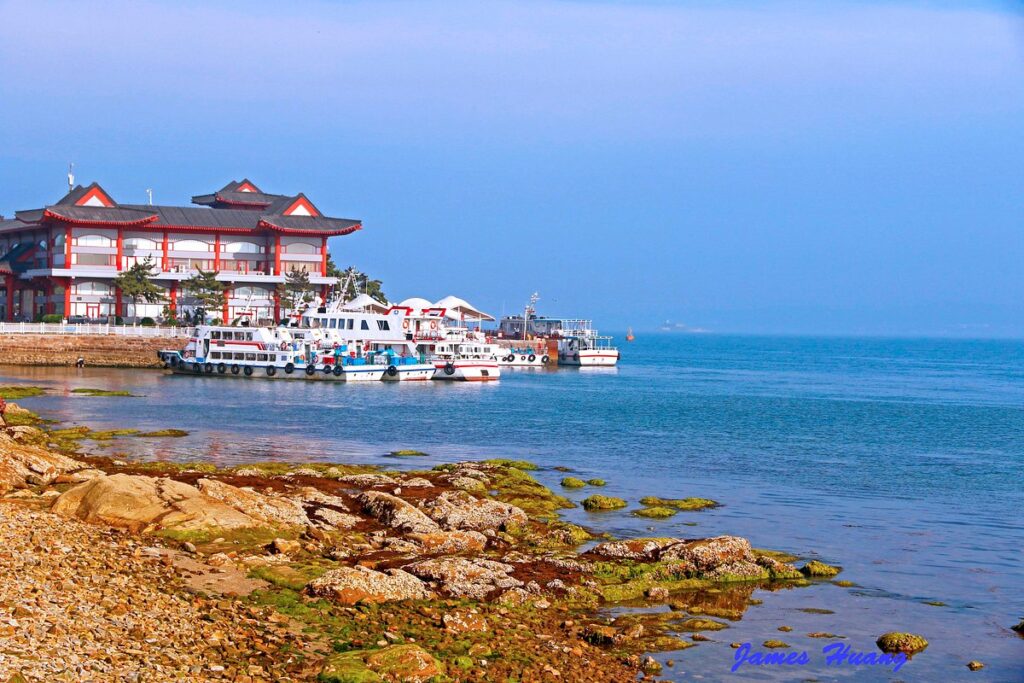
An Essential Guide to Visiting Liugong Island
In This Guide
- An Essential Guide to Visiting Liugong Island
- The Rich History and Legends of Liugong Island
- Main Highlights: What You Absolutely Can’t Miss
- Planning Your Visit: A Practical Guide
- Tickets: Prices, Booking, and Tips
- How to Get There: A Complete Transportation Guide
- Local Cuisine and Accommodation Nearby
- Frequently Asked Questions
- Final Thoughts on Your Trip
Visiting Liugong Island offers a unique opportunity to step back in time and witness the pivotal moments that shaped modern China. Nestled in the shimmering waters of the Bohai Sea, this historical gem is not just a tranquil escape from the hustle and bustle of the mainland; it is a living museum that reveals tales of naval battles, colonial history, and cultural evolution.
A Glimpse into the Past
Liugong Island is steeped in history, particularly notable for its role during the Sino-Japanese War in 1895. As the site of the headquarters of the Chinese Northern Fleet, the island witnessed intense military engagements that would alter the course of the nation’s history. Today, visitors can explore various museums and monuments that commemorate these significant events, including the Museum of the Sino-Japanese War, where engaging exhibits narrate the conflicts and their implications.

Liugong Island.
Natural Beauty Meets Cultural Richness
Beyond its historical significance, Liugong Island boasts stunning natural landscapes, characterized by lush greenery, rocky coastlines, and tranquil beaches. Whether you prefer leisurely strolls along the coastline or exploring the island’s hilly terrain, there are plenty of pathways to enjoy. For those who wish to cover more ground, transport options are available to navigate the island’s diverse attractions.
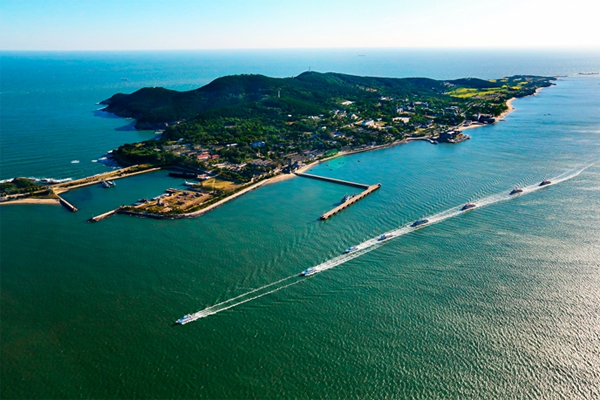
Liugong Island.
Practical Tips for Your Visit
- Access: A round-trip ferry ticket to the island typically costs around 122 yuan. Ensure you have your passport ready, as identification is often required for ticket purchases.
- Timing: The ferry service operates until 4 PM, so plan your visit accordingly to make the most of your time on the island.
- Language: While some museums provide English translations, the overall availability of information in English can be limited. A bit of preparation can enhance your experience—consider downloading translation apps or carrying a phrasebook to help bridge any communication gaps.

Liugong Island.
In summary, a visit to Liugong Island is not just an excursion; it is an enriching experience that combines history, culture, and natural beauty. Whether you’re a history buff, a nature lover, or someone simply seeking a peaceful getaway, this island promises memories that will linger long after your journey concludes.
The Rich History and Legends of Liugong Island
Liugong Island, a gem nestled in the shimmering waters of the Bohai Sea, is not just a picturesque getaway but a portal to China’s rich historical tapestry. This island, located just a short ferry ride from Weihai in Shandong Province, is steeped in narratives that intertwine with pivotal moments in Chinese history, especially during the late 19th century.

Liugong Island.
A Historical Overview
Liugong Island is renowned for its role during the First Sino-Japanese War (1894-1895), a conflict that fundamentally altered the course of modern Chinese history. The island served as the headquarters for the Qing Dynasty’s Northern Fleet, which sought to modernize and fortify China’s naval capabilities. However, the war culminated in disaster for the Qing forces, with Liugong Island falling to Japanese troops. The loss marked a significant moment of humiliation for China and heralded the onset of Japan’s imperial ambitions in East Asia.
The Sino-Japanese War Museum
One of the island’s primary attractions is the Museum of the Sino-Japanese War, located near the ferry terminal. This institution is an essential stop for those wishing to delve deeper into the island’s historical significance. The museum showcases a range of exhibits, including photographs, artifacts, and detailed accounts of the war, all of which are presented in English, making it accessible for international visitors. Here, you can grasp the gravity of the events that transpired on this island and their lasting impacts on Sino-Japanese relations.

Liugong Island.
The British Colonial Period
Following the war, Liugong Island transitioned into a British colony from 1898 to 1930. This period saw the establishment of various infrastructure projects, including the construction of military installations and residences. Interestingly, one of the homes on the island is rumored to have been the residence of Margaret Thatcher’s family, adding a layer of intrigue to its colonial history. The remnants of British architecture can still be seen, offering a unique juxtaposition against the backdrop of Chinese heritage.
Legends and Myths
Beyond its documented history, Liugong Island is rich with local legends and folklore. One popular tale revolves around the island’s name, which translates to “Liu Gong” meaning “to be a public servant.” This is said to reflect the island’s role in serving both military and civilian purposes throughout its history.
Another legend speaks of deities and protective spirits that are believed to guard the island from misfortune. Local fishermen often pay respect to these spirits before embarking on their journeys, seeking blessings for safe passage and abundant catches.

Liugong Island.
Natural Beauty and Exploration
In addition to its historical allure, Liugong Island offers stunning natural landscapes. Visitors can explore the island’s diverse terrain, which includes hills, beaches, and forests. The Liugongdao National Forest Park invites guests to immerse themselves in nature while uncovering remnants of its storied past, such as old gun emplacements and coastal fortifications.
For those wishing to traverse the island with ease, various transport options are available to navigate its hilly paths. You can opt for a leisurely ride around the island, stopping at scenic spots to soak in the views or to observe local wildlife, including deer and native birds, adding another layer of charm to your visit.
Conclusion
Liugong Island stands as a testament to China’s complex history, offering visitors a unique blend of educational experiences and natural beauty. Whether you are a history buff, a cultural enthusiast, or simply in search of a serene escape, this island promises a rich tapestry of stories waiting to be explored. As you stand on its shores, you are not merely a visitor; you are a part of the continuing narrative of this remarkable place.

Liugong Island.
Main Highlights: What You Absolutely Can’t Miss
Discovering the Essence of Liugong Island
Liugong Island (刘公岛), nestled off the coast of Weihai in Shandong Province, is not just a scenic retreat; it’s a treasure trove of history, nature, and culture. This small island, rich in historical significance, played a crucial role during the Sino-Japanese War and remains a poignant reminder of the past. Here’s a guide to the main highlights that you absolutely cannot miss when visiting this captivating destination.
1. Museum of the Sino-Japanese War
Start your journey at the Museum of the Sino-Japanese War, which chronicles the pivotal events of the late 19th century when Japan and China clashed over regional dominance. The museum’s exhibits are thoughtfully presented in English, making them accessible for international visitors. You’ll gain insights into the conflict that reshaped China’s history and witness artifacts that tell the story of resilience and struggle.
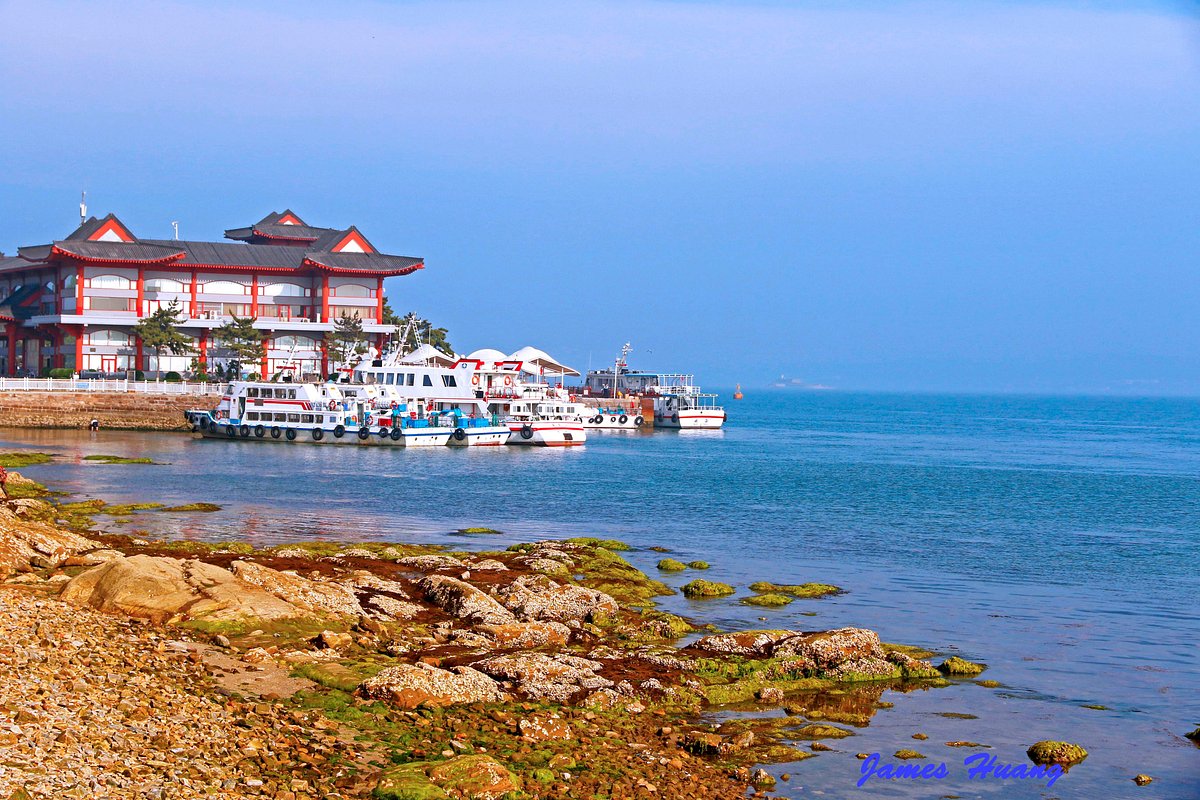
Liugong Island.
2. Liugongdao Exposition
Adjacent to the museum, the Liugongdao Exposition offers a deeper dive into the island’s military past. This site features various displays, including historical photographs, weaponry, and personal accounts from those who lived through the tumultuous times. This exposition is a must-visit for history enthusiasts eager to understand the complexities of international relations in the region.
3. Dingyuan Warship Tourist Area
No visit to Liugong Island would be complete without exploring the Dingyuan Warship Tourist Area. This area showcases the impressive Dingyuan, a battleship that played a significant role during the Sino-Japanese War. Visitors can tour the ship, offering a unique perspective on naval warfare and maritime history. It’s a powerful reminder of the island’s strategic importance during its naval glory days.
4. Natural Beauty and Scenic Walks
Beyond its historical significance, Liugong Island is blessed with stunning natural landscapes. Take a leisurely stroll along the coastal paths, where you can enjoy panoramic views of the sea and the rugged coastline. The island is dotted with tranquil spots perfect for reflection, and you might even encounter local wildlife, including deer and various bird species. For those less inclined to walk, there are transport options to help you navigate the hilly terrain.

Liugong Island.
5. Historical Structures and Gun Emplacements
As you explore, be sure to visit the historical gun emplacements scattered across the island. These remnants of past conflicts provide a tangible connection to the island’s military history. A visit to the western end of the island, where the original gun batteries are located, is particularly evocative. Here, you can ponder the resilience of those who fought to protect their homeland.
6. Relaxation and Local Culture
Don’t forget to take some time to relax at one of the island’s quaint tea houses or shops. Sample local delicacies and browse for unique souvenirs that reflect the island’s rich culture. The friendly locals are eager to share stories and traditions, adding an authentic touch to your visit.
7. Practical Information
- Getting There: Access to Liugong Island is via a ferry from Weihai, with a round-trip ticket costing approximately 122 Yuan. Remember to bring your passport, as it’s required for ticket purchase.
- Opening Hours: The island is accessible throughout the day, but ferry services typically close around 4 PM, so plan your visit accordingly.
- Language: While some English information is available, be prepared for limited English signage. Having a translation app handy can enhance your experience.
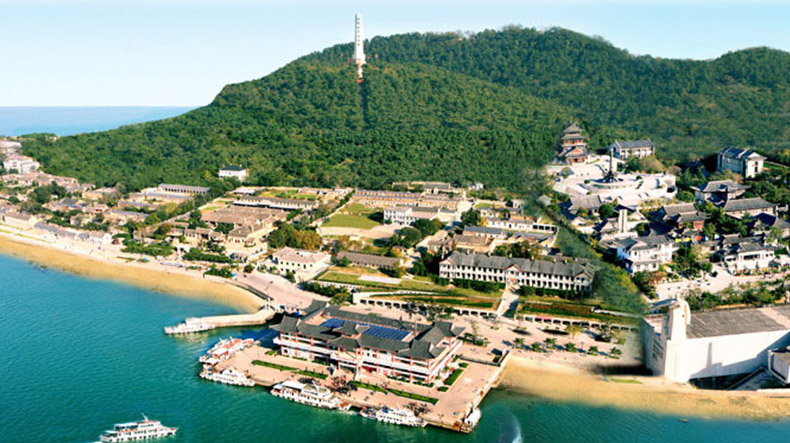
Liugong Island.
Visiting Liugong Island is more than just a day trip; it’s an opportunity to immerse yourself in a significant chapter of Chinese history while enjoying the island’s natural beauty. Whether you’re a history buff, a nature lover, or simply seeking a peaceful retreat, Liugong Island has something for everyone.
Planning Your Visit: A Practical Guide
Essential Information for Your Liugong Island Visit
Liugong Island, with its rich tapestry of history and breathtaking landscapes, is a must-visit for anyone exploring the cultural depths of China. Nestled in the Sea of Weihai, this island is not just a scenic getaway but also a site of significant historical importance, particularly regarding the Sino-Japanese War. Below is a comprehensive guide to help you plan your visit effectively.
Getting There
- Ferry Access: The island is accessible via a ferry from Weihai, with a typical crossing time of about 20 minutes. The round-trip fare is approximately 122 Yuan. It’s crucial to note that the last ferry departs at 4 PM, so plan your visit accordingly to ensure you don’t miss the return trip.
- Ticket Requirements: Always bring your passport or a clear photo of it, as ID verification is necessary to purchase tickets for both the ferry and entry to the island.
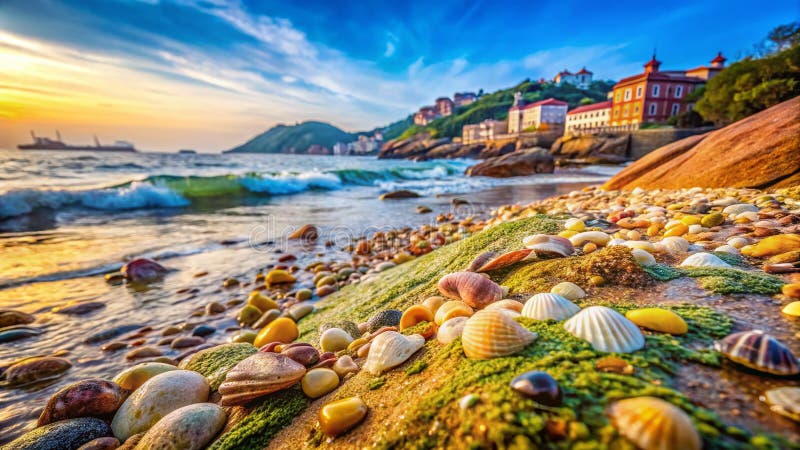
Liugong Island.
Best Time to Visit
- Seasonal Considerations: The ideal time to visit is during the spring and autumn months (April to June and September to November) when the weather is mild and the scenery is at its most picturesque. Summer can be hot, while winters can be quite chilly on the island.
Key Attractions on Liugong Island
-
Museum of the Sino-Japanese War: This museum provides a detailed account of the pivotal events during the Sino-Japanese War, making it an essential stop for history enthusiasts. Most exhibits have English translations, making them accessible to international visitors.
-
Liugongdao National Forest Park: Explore the natural beauty of the island with its lush landscapes and tranquil walking paths. The park offers a peaceful retreat and a chance to appreciate the island’s flora and fauna.
-
Historical Sites: Liugong Island is home to several historical military sites, including remnants of gun emplacements and fortifications that tell the story of its past. A visit to the British colonial architecture adds an intriguing layer to the historical narrative.
-
Scenic Walks: For those who enjoy hiking, the island offers numerous trails, including routes that lead to stunning viewpoints of the surrounding sea and landscape. Be prepared for some hilly terrain.

Liugong Island.
Transportation Options on the Island
- Internal Transport: If walking isn’t your preference, consider using the island’s local transport options. These services can help you navigate the hilly terrain while allowing you to hop off at various attractions.
Dining and Refreshments
- While visiting, you’ll find several quaint eateries offering local Chinese cuisine. Make sure to sample some regional seafood dishes, renowned for their freshness.
Tips for a Smooth Visit
- Language Barrier: English signage can be limited in some areas, so consider downloading translation apps or bringing a phrasebook to enhance your experience.
- Plan Your Day: Arrive early to maximize your time on the island. With various activities, museums, and scenic spots to explore, a full day is recommended.
- Cash and Payments: While some amenities may accept digital payments, it’s advisable to carry cash for smaller purchases, especially in local shops and eateries.
Nearby Attractions
- Weihai Jiawu Battle Memorial Hall: Just a short distance away, this memorial hall further contextualizes the significance of the battles fought in the region.
Liugong Island is not just a travel destination; it’s a journey through history. By following this guide, you’ll be well-prepared to immerse yourself in the rich culture and stories that this remarkable island has to offer. Enjoy your adventure!
Tickets: Prices, Booking, and Tips
Visiting Liugong Island (威海刘公岛) is a captivating journey into China’s rich historical tapestry, particularly its naval heritage and the pivotal Sino-Japanese War. To make the most of your experience, understanding the ticketing process, prices, and some handy tips is essential.
Ticket Prices and Booking
- Ferry Access: The primary mode of transportation to Liugong Island is via ferry, which costs 122 CNY for a round trip.
- Ferry Schedule: The last ferry departs the island at 4:00 PM. It is crucial to plan your visit accordingly, as the island closes at this time.
- Museum Admission: In addition to the ferry fare, there may be separate admission fees for specific attractions on the island, such as the Museum of the Sino-Japanese War, which is highly recommended.
Important Ticketing Details
- Identification Required: Be prepared to present your passport when purchasing tickets for both the ferry and island access. In some cases, a photo of your passport page may suffice, but it’s always best to carry the original document to avoid any complications.
- Advance Booking: While tickets can typically be purchased on-site, consider checking for any online booking options or local travel agencies, especially during peak travel seasons.
Tips for a Seamless Experience
- Plan Your Day: Given the limited ferry schedule and the multitude of attractions, such as the naval museums and historical sites, a well-planned itinerary will help you maximize your visit.
- Explore Transportation Options: If walking is not your preference, various transport options are available on the island to help you navigate its hilly terrain. Consider using these to save time and energy.
- Language Barrier: Be aware that some information on the island may be presented in Chinese, and while some museums offer English displays, having a translation app can be beneficial.
- Comfortable Footwear: The island features many walking paths and historical sites, so wearing comfortable shoes will enhance your exploration experience.
By understanding the ticketing process and preparing adequately, you can fully immerse yourself in the historical significance of Liugong Island and enjoy a memorable day amidst its scenic beauty and rich culture.
How to Get There: A Complete Transportation Guide
Getting to Liugong Island: Your Complete Transportation Guide
Situated just off the coast of Weihai, Liugong Island is a treasure trove of Chinese history and a serene escape from the bustling mainland. With its rich historical significance from the Sino-Japanese War and charming landscapes, getting to this captivating island is both straightforward and enjoyable. Here’s everything you need to know about reaching Liugong Island.
Traveling to Weihai
Before you can set foot on Liugong Island, you must first arrive in Weihai. Here are the main transportation options:
1. By Air:
– Weihai Dashuibo Airport (WEH) is the closest airport, located about 30 kilometers from the city center. It offers domestic flights connecting to major cities like Beijing, Shanghai, and Guangzhou.
– Airport Transfers: Upon arrival, you can take a taxi or use a rideshare app to reach the city center or your hotel.
2. By Train:
– Weihai is accessible via high-speed trains from cities such as Beijing, Jinan, and Qingdao. The Weihai Railway Station is conveniently located in the city center.
– Local Transportation: Taxis and buses are readily available from the train station to various parts of the city.
3. By Bus:
– Long-distance buses connect Weihai with neighboring cities. The Weihai Bus Station has frequent services from major urban centers.
– Local Transit: Buses and taxis can help you navigate from the bus station to your accommodation or the ferry terminal.
Ferry to Liugong Island
Once in Weihai, the final leg of your journey involves a scenic ferry ride to Liugong Island:
1. Ferry Departure Point:
– Ferries to Liugong Island depart from the Weihai Ferry Terminal, located near the city center. The terminal is easily accessible by taxi or local bus.
2. Ferry Schedule and Duration:
– Ferries run frequently throughout the day, with the journey taking approximately 20 minutes.
– Important Note: The last ferry back to Weihai departs at 16:00. Make sure to plan your visit accordingly!
3. Ticket Purchase:
– Tickets for the ferry are priced at 122 Yuan for a round trip.
– ID Requirement: Bring your passport or a clear photo of it, as identification is required to purchase tickets.
Exploring Liugong Island
Upon arrival, you’ll find that Liugong Island is not only rich in history but also offers various transport options to explore its attractions. If walking isn’t your preference, there are local transport services available to navigate the island comfortably.
Final Tips for Travelers
- Language Barrier: While some information may not be available in English, it’s advisable to download translation apps or have key phrases ready to help communicate with locals.
- Plan Ahead: Given that attractions may have specific opening hours, it’s wise to check timings for museums and ferry services in advance to maximize your visit.
Conclusion
Liugong Island is a remarkable destination for those interested in Chinese history and culture. With its accessible transportation options, fascinating museums, and stunning views, your journey to this historical site will surely be a memorable adventure. Happy travels!
Local Cuisine and Accommodation Nearby
When visiting Liugong Island, immersing yourself in the local cuisine and finding the perfect place to stay can significantly enhance your experience. The island, steeped in history, offers not only a glimpse into China’s past but also a delightful array of culinary options and accommodations that reflect its cultural richness.
Culinary Delights
Liugong Island and the nearby Weihai area boast a vibrant culinary scene that highlights coastal flavors and traditional dishes. Here are some recommended spots for you to sample local delicacies:
- BeiFang JiaoZi Wang (北方饺子王)
- Cuisine: Dumplings
- Distance: Approximately 2.6 miles from the island
-
Highlights: Known for its handmade dumplings, this restaurant offers a variety of fillings, making it a perfect stop for a quick and satisfying meal.
-
BaiYunBinGuan Restaurant (白云宾馆)
- Cuisine: Chinese
- Distance: About 2.7 miles away
-
Highlights: A popular choice among locals, BaiYunBinGuan serves traditional Chinese dishes with fresh ingredients, providing a taste of regional flavors in a comfortable setting.
-
Seafood Italian Bistro
- Cuisine: Italian and Seafood
- Distance: Roughly 2.9 miles from the island
-
Highlights: For a fusion of flavors, this bistro combines Italian recipes with local seafood, offering a unique dining experience with stunning coastal views.
-
LaoMa GeDaTang (老马哥大汤)
- Cuisine: Chinese
- Distance: Approximately 2.8 miles away
-
Highlights: This restaurant is famous for its hearty broths and soups, which are perfect for warming up after a day of exploring the island.
-
BaShan ShuShui (八山熟水)
- Cuisine: Chinese Seafood
- Distance: About 2.9 miles from the island
- Highlights: A must-visit for seafood lovers, this eatery serves fresh catches from the sea, prepared in traditional Chinese styles.
Where to Stay
While Liugong Island itself is primarily a day-trip destination, there are several accommodation options in nearby Weihai that provide comfort and convenience for your stay:
- Weihai International Hotel (威海国际大酒店)
- Overview: A luxurious option with stunning views of the ocean, this hotel provides modern amenities and easy access to local attractions.
-
Highlights: On-site dining, fitness center, and proximity to the ferry terminal.
-
Shandong Hotel Weihai (山东大酒店)
- Overview: A well-established hotel offering comfortable rooms and a variety of dining options.
-
Highlights: Close to the beach and cultural sites, making it a great base for your explorations.
-
Holiday Inn Express Weihai (威海智选假日酒店)
- Overview: This hotel combines affordability with comfort. It’s a great choice for travelers looking for convenience.
-
Highlights: Free breakfast, business center, and easy access to public transport.
-
Weihai Blue Horizon Hotel (威海蓝海酒店)
- Overview: A mid-range hotel known for its friendly service and clean accommodations.
-
Highlights: Offers a great view of the sea and is located near local dining options.
-
Hostel options
- For budget travelers, various hostels in Weihai offer a more communal atmosphere, ideal for meeting fellow travelers and sharing tips about exploring the island.
Final Tips
Before you head out to explore Liugong Island, remember to bring your passport, as it may be required for ferry tickets and entry into some attractions. Whether you indulge in the local cuisine or relax at your chosen accommodation, your journey to Liugong Island will undoubtedly be a memorable chapter in your exploration of China’s rich history and culture.
Frequently Asked Questions
Frequently Asked Questions about Liugong Island
1. How do I get to Liugong Island?
To reach Liugong Island, you will need to take a ferry from Weihai. The ferry ride typically lasts around 20 minutes, offering scenic views of the coastline. Tickets can be purchased at the ferry terminal.
2. What is the cost of accessing Liugong Island?
The round-trip ferry ticket costs approximately 122 Yuan. Be sure to check specific operating hours, as the last ferry returns at 4 PM.
3. Do I need to bring my passport?
Yes, it is essential to bring your passport or at least a photocopy of it when purchasing tickets for the ferry and island access. Some sites may require ID verification, so having your passport handy will ensure a smooth entry.
4. What are the main attractions on the island?
Liugong Island is rich in historical significance. Key attractions include:
– Museum of the Sino-Japanese War: Offers insights into the pivotal events of the war that shaped modern China.
– Liugongdao Exposition: Features various exhibits related to the island’s military history.
– Historical Gun Emplacements: Explore the remnants of fortifications from the late 19th century.
5. Are there transportation options available on the island?
Visitors can explore various transport options available on the island. If you prefer not to walk, small vehicles provide tours around the island, allowing you to hop on and off at different points of interest.
6. What is the best time to visit Liugong Island?
Liugong Island is a year-round destination, but the best time to visit is during the spring (April to June) and autumn (September to November) when the weather is mild and the scenery is particularly beautiful.
7. Is there English information available on the island?
While some museums and attractions provide English translations, it can be challenging to find comprehensive English information throughout the island. It may be helpful to have a translation app or guidebook handy.
8. Are there dining options on Liugong Island?
Yes, there are several local restaurants and eateries on the island where you can enjoy regional Chinese cuisine. Additionally, quaint shops offer snacks and souvenirs, making it easy to find refreshments during your visit.
Visiting Liugong Island offers a unique blend of natural beauty and historical exploration—perfect for travelers eager to delve into Chinese culture!
Final Thoughts on Your Trip
As your journey draws to a close, it’s essential to reflect on the rich tapestry of history and culture that Liugong Island has unveiled before you. This remarkable destination, nestled in the shimmering waters of the Bohai Sea, offers a unique glimpse into China’s past, particularly during the tumultuous times of the Sino-Japanese War.
Unforgettable Experiences Await
-
Historical Insights: At the heart of the island lies the Museum of the Sino-Japanese War, a treasure trove of artifacts and narratives that illuminate a pivotal chapter in Chinese history. Engaging with these exhibits not only deepens your understanding of the past but also enriches your appreciation for the resilience of the Chinese people.
-
Scenic Wanderings: Beyond the museum, the island’s picturesque landscapes beckon. Whether you choose to stroll along its serene paths or take advantage of local transport options, each corner reveals stunning vistas and remnants of historical significance. Don’t miss the chance to explore the remnants of gun emplacements and the breathtaking views from the summit.
-
Cultural Connections: The island’s unique blend of Chinese and colonial influences offers a fascinating cultural experience. From quaint shops selling local crafts to the welcoming smiles of residents, every interaction is a reminder of the island’s vibrant history and ongoing story.
Practical Tips for Your Visit
- Bring Your Passport: Remember to carry your passport or a photocopy for ticket purchases, as ID verification is necessary for entry.
- Plan Your Day: The ferry operates until late afternoon, so plan your visit accordingly to ensure you have ample time to explore.
- Language Barrier: While some information may be limited in English, the visuals and experiences speak volumes. Consider hiring a local guide or using translation apps to enhance your understanding.
As you leave Liugong Island, take with you not just the memories of its stunning landscapes and historical sites, but also a newfound perspective on the complexities of China’s past. This small island is a microcosm of the broader narrative that shapes the nation today. Whether you’re a history buff, a culture enthusiast, or simply a curious traveler, Liugong Island is sure to leave an indelible mark on your journey through China. Safe travels!